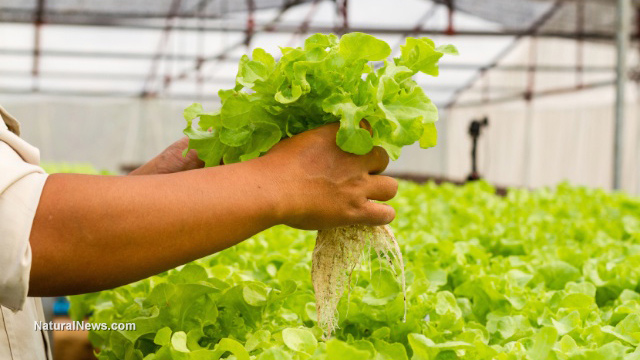
How to create a fully off-grid indoor food production system
(NaturalNews) Times are changing, dramatically. The age-old certainty of the supermarkets being open 24 hours a day, everyday, is just one minor cataclysm away. With the current state of global instability, the threat of wars on our own shores, pandemic outbreaks and financial crisis seem ever more real. Only when there is no food to eat will people realize that they can't eat money...
This is not intended to scare anyone, but maybe it's time to consider some self-preparation?
For relatively little financial investment, one can create a fully off-grid indoor food production system, with two main components. One certainty for millennia now is that the sun will rise and set everyday, providing an indefinite power source. The other component is aquaponics. (Read more here to learn what aquaponics is: NaturalNews.com.)
A solar-powered aquaponic grow room can provide fish and veggies for as long as needed when the zombie apocalypse arrives. It does, however, take a little time to set up and refine, so if growing your own organic fish and food sounds appealing, there's no better time than right now to get started.
First, you'll need the space to set up the room. A well-lit room with windows is a good start; however, if you can get a hold of some sunlight grow lights, a garage would work perfectly. You will need a large aquarium to hold the fish (talapia, trout, catfish, prawns, snails etc.) and grow trays or vertical towers to grow the veggies in. A bio filter to break down the fish waste is a must-have, and a few pipes and pumps will circulate the water into the grow beds.
The beauty of this system is that the longer it runs, the better it performs. Once the beneficial bacteria numbers reach a certain point, they break down the fish waste into most of the nutrients that the plants need to grow and flourish, thus eliminating the need to add expensive nutrients to the system
. Since the water is also always circulating through the plant roots, it is cleaned and recycled, creating a closed water system with very little top-off needed.
Within a few months, veggies can be harvested, and within 9-12 months, you can start to eat the fish in the system. At this point, they should also be reproducing, so you should have a renewable source of fish, and if you let some of the plants go to seed, you should have plenty of seeds for the next harvest.
As long as you keep an eye on the solar power system and ensure that the pipes and pumps are clear and working correctly, this system should run for years!
It really doesn't take a lot of scientific know-how to set something like this up; it really just takes the desire to be self-sufficient!
Sources:
http://theaquaponicsource.com
http://www.growingpower.org
No comments:
Post a Comment